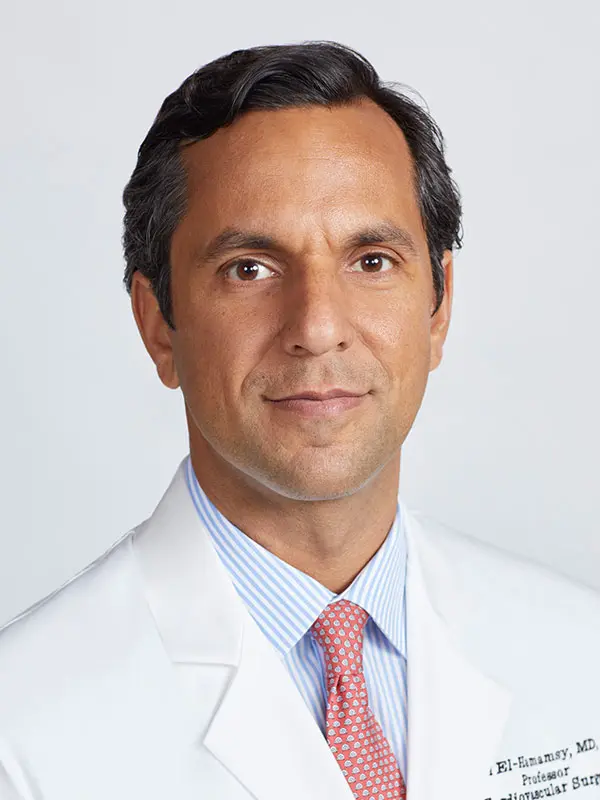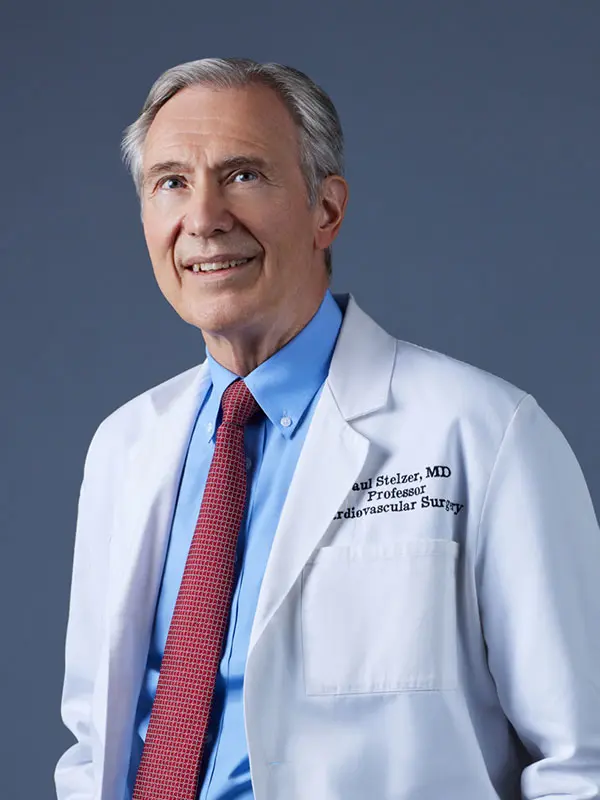Answering a need for durable solutions to aortic valve disorders patients under 60, Mount Sinai Heart has developed a comprehensive aortic reconstructive program led by two of the world’s top aortic surgeons.
“The program encompasses everything from aortic valve repair to aortic-valve-sparing operations and the Ross procedure—three main categories of operations that are very specialized,” says Ismail El-Hamamsy, MD, PhD, the Randall B. Griepp Professor of Cardiovascular Surgery, Icahn School of Medicine at Mount Sinai, and Director of Aortic Surgery, Mount Sinai Health System. “These are procedures that aren’t done routinely in the majority of centers around the country and around the world; we not only specialize in them, we perform the highest volumes.”
The aortic reconstructive program complements the renowned Mitral Valve Repair Reference Center headed by David H. Adams, MD, the Marie-Josée and Henry R. Kravis Professor and Chair of Cardiovascular Surgery, Icahn School of Medicine, and Cardiac Surgeon-in-Chief, Mount Sinai Health System.
One recent case illustrates the strength of this integrated approach to complex, multi-valve surgery.
Victoria K., 55, was at the beach in July 2020 when she felt a lump on her right breast that grew rapidly and painfully in a matter of hours. That night she went to a local ER, where physicians found a dangerous hematoma and identified its cause—the warfarin she was taking to maintain a mechanical heart valve. Victoria had a long history of cardiac procedures, including heart surgery at 15 to repair a congenital defect in her bicuspid aortic valve, and a biological valve replacement at age 40, which itself was replaced with a mechanical valve nine years later. Now that valve was failing, and she was running out of options.
Her surgeon on Long Island recognized that Victoria might benefit from the Ross procedure, which involves replacing a patient’s diseased or damaged aortic valve with their own pulmonary valve, which is in turn replaced with a pulmonary valve from a deceased donor. Recognizing the complexity of the procedure, he referred her to Dr. El-Hamamsy.
“Victoria was a high-risk case, but an ideal candidate,” Dr. El-Hamamsy says. “When you are replacing two valves, it’s intrinsically more complex. Every detail matters.”
Dr. El-Hamamsy and Paul Stelzer, MD, Professor of Cardiovascular Surgery, Icahn School of Mount Sinai, have together performed the Ross procedure more than 1,200 times. For years they collaborated from afar, and led “The Ross Master Course” annual symposium in Montreal, where Dr. El-Hamamsy was based. In March 2020, Dr. El-Hamamsy joined the Mount Sinai Heart team.
“We want to offer these younger patients options that will allow them to have the best long-term outcomes in terms of survival, and quality of life, and not needing lifelong blood-thinners.”
Ismail El-Hamamsy, MD, PhD
Nationwide, approximately 300 patients get Ross procedures every year—with numbers growing. The number who could benefit from the procedure is likely higher, as it is both safe and highly effective over the long term, according to data from a large international study published by Dr. El-Hamamsy and his peers in a March 2021 paper in JAMA Cardiology.
The Ross procedure is especially appropriate for:
• Patients under 60 who, given their anticipated lifespan, seek to avoid the future operations typically needed after placement of biological valves;
• Active patients who seek a normal quality of life with no lifestyle restrictions;
• Patients who want to avoid taking blood thinners for the rest of their lives;
• Pediatric patients whose hearts are still growing.
In Victoria’s procedure, Dr. El-Hamamsy, Dr. Stelzer, and Dr. Adams worked as a unified team—an approach that typifies Mount Sinai’s holistic, collaborative approach to patient care.
Victoria’s condition was even more challenging than expected. Scar tissue below the valve had significantly reduced the effective orifice area. This resulted in secondary tricuspid valve regurgitation, which would require simultaneous repair.
She underwent the Ross procedure, tricuspid valve repair, and a single coronary bypass graft. Four months after surgery, she was walking her golden retriever a few miles a day, was back at work as a teacher’s aide, and was working with a physical therapist to rebuild the strength that years of heart problems had taken from her. Victoria also no longer has to take warfarin. “I wish I had known about the Ross procedure earlier,” she says, “If I had, I would have had it done as my second surgery. It’s a godsend that I don’t have to take that medicine anymore.”
For a patient such as Victoria, whose three previous open-heart operations made her case especially complex, only four or five hospitals in the United States might have a surgical team with sufficient expertise to execute the procedure with a high probability of success. But in expert hands, the Ross procedure is both safe and effective, as documented in Dr. Stelzer’s March 2021 paper in The Journal of Thoracic and Cardiovascular Surgery.
“We do this so much that we’ve tamed the beast,” Dr. El-Hamamsy says, noting that Mount Sinai’s reconstructive valve team is committed to offering its patients biological solutions if at all feasible. “We want to offer these younger patients—based on the literature and the evidence—options that will allow them to have the best long-term outcomes in terms of survival, and quality of life, and not needing lifelong blood-thinners.”
The volume of such complex procedures performed at an institution is crucial. “For patients, it all hinges on having access to a high-volume center—such as Mount Sinai Heart—with expertise in these procedures, because it is well documented that in cardiac surgery, volume and outcomes are tightly correlated.” Dr. El-Hamamsy says. “The more you do these procedures, the more proficient you become, the more nuanced you are, the safer it is for the patient. And the better our entire team becomes, including imaging, anesthesia, nursing, and ICU, the better our patient outcomes are.”
Mount Sinai surgeons performed more than 100 aortic root reconstruction operations in the past year alone, making it one of the highest-volume aortic reconstruction centers in the country. “At Mount Sinai Heart, we are ahead of the curve when it comes to aortic surgery in terms of the volume, complexity, and outcomes of procedures.” Dr. Stelzer says. “And for patients, this really makes a difference.”
In a Grand Rounds presentation in July 2020, Ismail El-Hamamsy, MD, PhD, discussed aortic valve surgery in non-elderly adults, and reviewed the literature on the topic. (Viewing time: 53 min)
Featured

Ismail El-Hamamsy, MD, PhD
Randall B. Griepp Professor of Cardiovascular Surgery, Icahn School of Medicine, and Director of Aortic Surgery, Mount Sinai Health System

Paul Stelzer, MD
Professor of Cardiovascular Surgery, Icahn School of Medicine